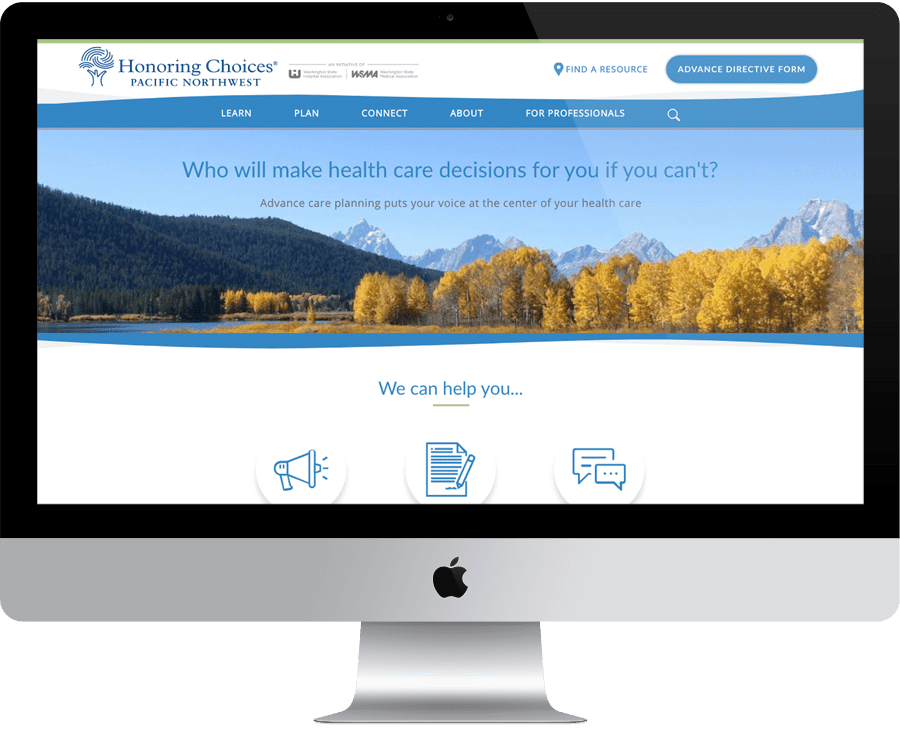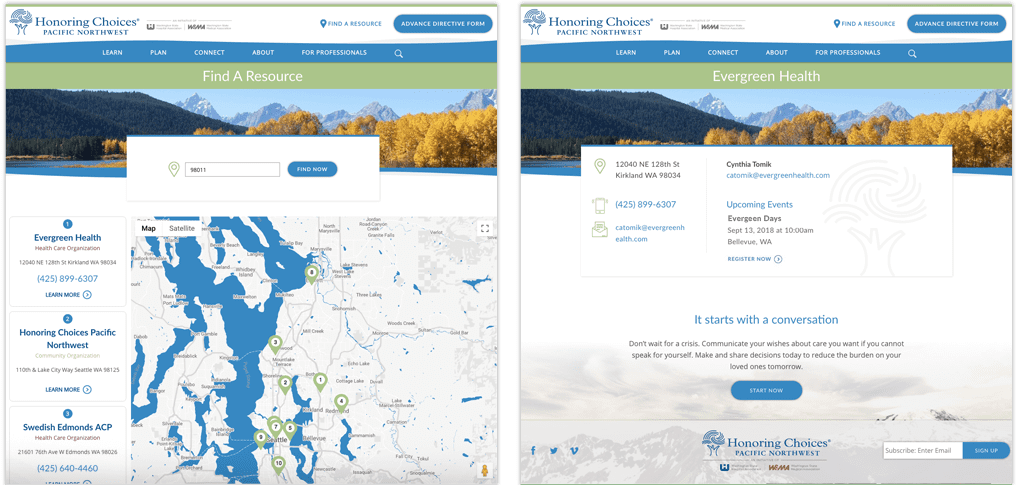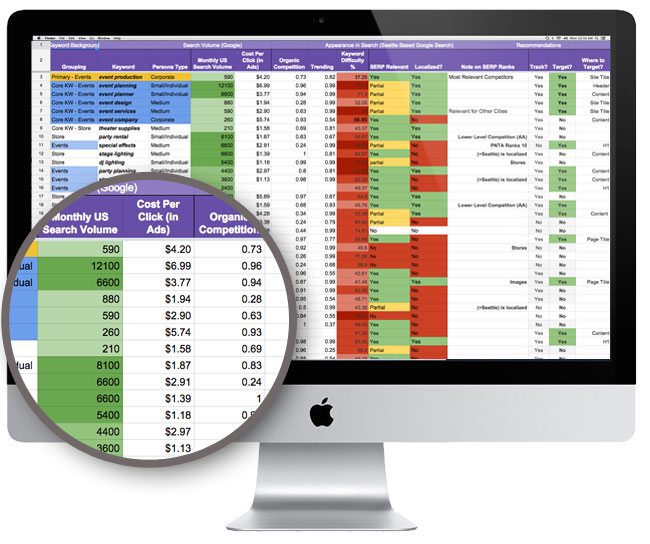Give your visitors a healthy dose of your medical brand with strong healthcare website design.
The Medical Website Design Specialists
The Medical Website Design Specialists
Healthcare organizations are busy and already have to be experts at so many things—why should web design be added to the plate? Our website care team will work with you to help make the perfect medical site, so you can focus on the patients.

Custom Designed Healthcare Websites
When it comes to creating a medical website, custom design can make the difference between a generic online presence and an effective, result driven marketing tool. A healthcare website not only needs to look visually appealing, it needs to build trust with your potential patients, communicating strong messaging about your practice and medical expertise and providing a seamless customer experience. Our customized medical web design services take into account all these crucial aspects to deliver the most effective online presence for your healthcare practice.
Our Healthcare Web Design Process
We always start with a plan that considers your users (like providers, patients, insurers, medical device makers, etc.), how they get to the site and what you want them to do. This is where we determine the pages on your site and the content strategy that will ultimately help you book more patients.
From there, we write content and design a site that supports those users’ journeys all the way through. We build wireframes that map out the pages, then apply visual design that brings your healthcare organization to life to create the impression you want for your visitors.
With design decided, we build custom code on top of easy-to-manage WordPress themes, which makes development fast, and management for your organization much easier once we give you the keys. We even train you on the few processes there are to know so you can build new pages, post blogs and anything else well into the future.
Regardless of what you’re offering, there’s a lot of competition for care—standing out when people search for your stuff means strong SEO (Search Engine Optimization) services are a must. We bake this in through keyword research, optimizing your code to reduce issues, and providing content strategies for continuing to rank for your most important search terms.
Healthcare Industries We Work With
Sayenko Design work with a full range of healthcare professionals, providing professional medical web design that is specifically tailored to the unique needs of your business goals.
Hospitals and Medical Practices
Hospital and medical practice website need to help patients find providers, learn about procedures, schedule appointments, pay bills, and identify healthcare tools. These websites provide essential functions to members with ease and functionality.
Nursing and Residential Care Facilities
These sites provide cost information and services for those looking to care for family members or themselves. Important elements of these sites include information about insurance and Medicare, high quality visuals of the facilities, and testimonials from current residents to help assuage concerns.
Medical Practitioners
Medical Practitioner sites are like portfolios that potential patients use to learn more about a provider they may be working with. They should feature some testimonials, information about their background and education, and details to help patients make a personal connection.
Ambulatory Health Care Services
These websites are information centered, providing straightforward patient services, patient resources, and importantly patient portals to manage care.
Medical Devices, Equipment, and Hospital Supplies Manufacturers
Medical supplier websites are more akin to your standard marketing site, which should allow visitors to place orders, showcase products, and make it easy to contact the manufacturer.
Medical Insurance, Medical Services and Managed Care
Insurers and other service providers should function like databases, where visitors can locate things like in-network doctors, explore cost comparison tables, and make informed financial decisions. FAQs, easy-to-locate Contact information, and automations like chatbots can help with the many questions members will have to understand their benefits.
Pharmaceuticals
Pharmaceutical sites are most effective when they utilize minimalist web design with access to credible sources of information about side effects and other pharmaceutical information. In addition, visitors such as doctors and patients will want to find information like testimonials and pricing information.
What Makes a Successful Healthcare Website?
Navigating the complexities of the healthcare industry requires more than just a standard website; it demands a thoughtfully designed digital presence that serves both providers and patients effectively. Well-crafted medical websites act as a virtual extension of your medical practice, offering a seamless and intuitive experience that mirrors the quality of care you provide in person. From the moment visitors land on your site, they should find what they’re looking for with ease—whether that’s scheduling an appointment, seeking immediate advice through chat support, or exploring in-depth medical resources. The aim is to facilitate the patient journey from awareness to action, while ensuring that the website adheres to the highest standards of accessibility, security, and user experience.
Give Your Site a Front Desk Reception
Match the in-person clinic experience on your healthcare website with always-on chatbots. Like a nurse hotline, it’s always there on each page of the site to provide helpful advice and answer questions and handle most interactions on its own. It can even triage visitors with the most complex or urgent questions to live patient support staff, who can continue the conversation in the same spot for maximum convenience.
Make Finding Providers Easy with a Search Function
Allow visitors to quickly find providers and resources by using search filters, such as how far away they are, their availability, contact info, upcoming events and more. It’s important that this process is easy to understand for users so they don’t become discouraged and bounce. Add a Google map with matching hospital color scheme for some additional functional flair.

Describe the Healthcare Services
Pages that describe your healthcare and wellness services are at the consideration level of the marketing funnel. Visitors are interested in the promise made by one of your blog posts or the homepage, and want to drill down to learn exactly how they’d be taken care of what they’d get by working with you. The goal of service pages should be to help people make an educated decision about their health needs without having to speak to someone by phone or email.
Diagnose the Right Keywords
Most people find the various kinds of care they need through online search, often through a phone. That means if you’re not showing up in the search, you’re not getting considered. Partner with a healthcare web developer who can conduct full keyword research relevant to your services so you can include those terms in your website copy and build a strategy to rank for those terms more often. This is especially relevant for location-based healthcare services, as people often search for “X service near me” and look to their maps. Get on the map, and you can get patients coming in.

Prescribe Visitors Some Helpful Resources
As medical healthcare providers, it’s expected that you’ll have a Gray’s Anatomy’s worth of resources to prove your expertise. A resource center presents an opportunity to introduce new people to your medical brand, drive organic traffic from Google searches, and build your audience’s confidence in the medical treatments described in the content.

Scrub in your Staff with Bios in the About Page
About pages are at the intent and evaluation level of the marketing funnel, drawing in visitors who like what you have to say, and now want to see if they like the people saying it. They’re the 2nd most popular page on any health business website, so the content must be top of its class. The primary goal is to build trust and accurately communicate your organization’s mission, vision, and values. Share details about the brand’s history, accreditations, and associations, and include medical staff bios complete with consistent headshots and personal stories to connect with readers. By the time they’re done reading these pages, visitors should feel confident that they know who your brand and its team are and feel comfortable putting their health in your hands.

Build a Healthy Backend
Many healthcare websites have to manage interactions just collecting leads. Many have user logins and appointment scheduling systems, not to mention secure messaging portals that need to be HIPAA compliant. Partner with a healthcare website developer who understands the unique needs of your business and can create a seamless user experience.
Our Healthcare Website Case Studies
Wider Circle
Wider Circle connects local aging neighbors in order to empower communities to support and care for each other. We helped them improve their brand, overhauled the user experience to cater to different audiences, increased engagement through storytelling, and made sure they were compliant with accessibility standards.
Therapeutic Health Services
Therapeutic Health Services (or THS) serves thousands of men, women, children, and young adults struggling with behavioral health issues in Washington state. Their caring, sympathetic, and skilled staff support people challenged by substance use and mental health conditions.
Our WordPress Themes and Templates
For the theme, we stand behind Avada as the best WordPress theme to build out any site, including healthcare related sites. Check out a few of their templates to see what’s possible with very little setup work, and minimal maintenance work. Any of these can be customized further on your own, or with the help of a skilled web design Seattle agency.
Dentist
With a side menu, easy to use forms, and light animation, this engaging and bright template works well for medical services.
Health
This template uses traditional site design with easy to expand information pages so you can build out a lot of different departments and service offerings.
Psychology
With modern aesthetics and big, easy to navigate blocks, this template is great for smaller and more personalized health services.
Spa
A unique staggered and floating look that focuses on photography helps health providers and non-standard care stand out, with a calming look.
Take Your Medical Website to the Next Level
Sayenko Design are dedicated to helping your healthcare practice achieve excellence in web design. Our team of web designers have over 8 years experience each, creating eye catching performance driven websites that focus on effective communication and optimal user experience.
We approach your website as an integrated whole, incorporating technical excellence, targeted communication and digital marketing integration so your online presence is ready to shine.










